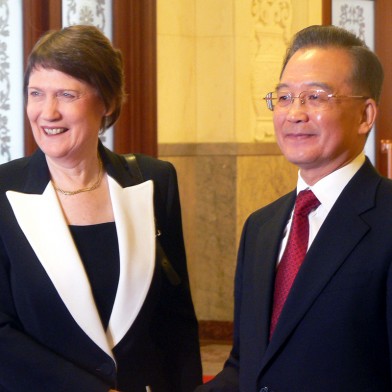Major Philippines broadcasters and China Southern Airlines are among clients from Asia using MetService’s weather technology – a little-known service export to the region.
MetService is a household name for Kiwis as they decide what to wear in the morning or whether it’s safe to take to the road in challenging conditions. But its technology is also one of New Zealand’s lesser-known services exports to Asia.
Its international subsidiary, MetraWeather, has a regional office in Bangkok and commercial clients in Cambodia, China, Hong Kong, Myanmar, the Philippines, Sri Lanka and Thailand.
“Almost all of our clients in Asia are media clients – broadcasters using our Weatherscape graphics system, data sourcing solutions and technical skills to communicate weather and environmental information to the public,” says Jacqui Bridges, MetService’s general manager of corporate affairs.
MetraWeather has been helping China Southern Airlines with flight operations safety since 1996, making China Southern its longest-standing client in Asia.
In the Philippines, MetraWeather works with three of the country’s four national broadcasters to improve public safety communication. This includes taking high-resolution satellite and model date to enable forecasting at suburban, metropolitan and provincial levels.
“The escalating severity of extreme weather events across Southeast Asia is creating new challenges for a region often deeply impacted by the elements,” says Bridges.
Broadcaster GMA network uses MetService’s Weatherscape XT graphics platform for its “IM Ready Public Service Portal” and associated social media accounts.
Weatherscape XT enables the curation and publishing of forecasts, weather news and alerts over multiple channels, including broadcast TV, the internet, mobile devices and social media. For GMA, Weatherscape allows them to produce social media videos for city forecasts, and alerts for heavy rain and typhoons.
TIME magazine has described the Philippines as the most storm-exposed country in the world, with an average of eight or nine tropical storms making landfall each year.

Typhoon Haiyan battered the Philippines with wind speeds of 195mph in 2013.
MetService’s new partnership is one with the Philippines’ national meteorological service, Philippine Atmospheric Geophysical and Astronomical Services Administration (PAGASA). Bridges says the government-to-government relationship will allow PAGASA to use the Weatherscape XT software to work with the national broadcasters to improve communication of severe weather warning information.
“PAGASA’s typhoon forecasts, radar and warnings data, observations and other forecasts will be made available in a Weatherscape-specific data format to allow for automatic import of the data in real time.”
Bridges says the new partnership will help its commercial customers as well as PAGASA, allowing Metservice to “contribute to public good activities in other nations, while at the same time enhancing our commercial capabilities internationally”. As a state-owned enterprise, MetService is the world’s only commercial national meteorological service.
“We aim to do more business in the Philippines, so taking a leadership position for weather, marine and natural hazard management and harm reduction can only be good for us from both perspectives.”
New Zealand signed three agreements with the Philippines when Prime Minister Jacinda Ardern was in Manila for the East Asia Summit. One was a memorandum of understanding between MetService and its counterpart in the Philippines.
New Zealand and the Philippines also renewed an agreement to co-operate on geothermal energy development, and signed a co-operation deal between Philippine Airlines and Tourism New Zealand aimed at boosting two-way tourism numbers after direct flight links begin in December 2017.
– Asia Media Centre
